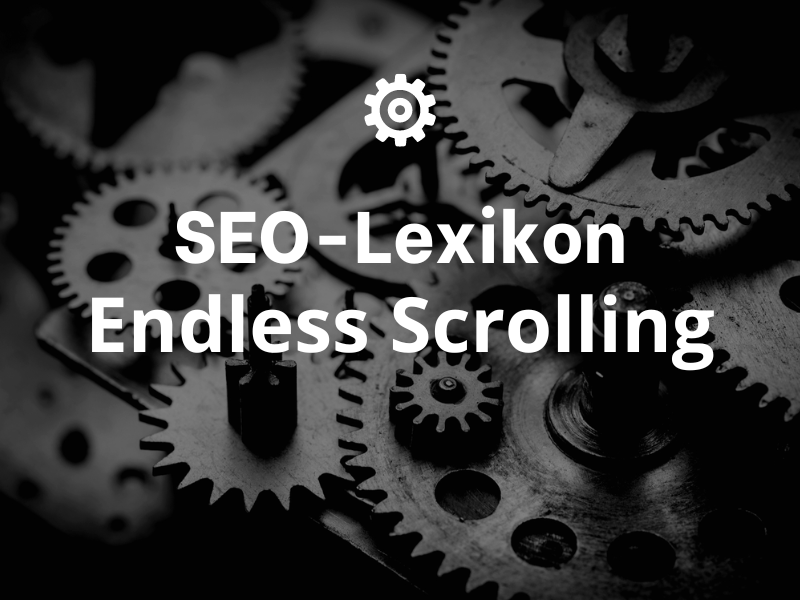
Definition
Endless scrolling is a special user interface that allows the user to access content or information by scrolling infinitely on a page. Unlike other forms of navigation that require the user to switch between different pages, with Endless scrolling a single flow of content is loaded as the user scrolls.
Advantages
Endless scrolling provides a simple, intuitive, and consistent experience for users. It allows users to browse and explore content on a page quickly and easily, without having to constantly jump between different pages.
Disadvantages
Endless scrolling can cause problems due to performance limitations, as a lot of content has to be loaded when the user scrolls. In addition, it can be difficult to keep track of what is on the page and to keep track of what is on the page because the user can no longer see how much content is on the page.
Use cases
Infinite scrolling is this cool technique where new content is automatically reloaded as you scroll down. But let's talk about when it's really useful and when it just causes frustration.
1. social media feeds - example: Facebook, Twitter, Instagram
You probably know the situation: You're scrolling through your timeline and just want to see what your friends are up to or what new photos have been uploaded. This is where infinite scrolling is worth its weight in gold! The new posts load automatically and you don't have to keep clicking on a "Show more" button. You stay in the "scroll flow", so to speak.
2. online stores - example: Zalando, Amazon (partially)
If you're looking for a new pair of shoes, you don't want to have to click on "Next page" every time, do you? That's exactly what Infinite Scrolling is great for. The products simply continue to load while you scroll through the selection. But beware: some users also like it when they have the option to jump to a specific page, so use it wisely.
3. news and blog feeds - example: Medium
Here you can scroll endlessly through articles and don't have to keep going back to the overview to click on the next post. This way, you might discover topics that you would have otherwise overlooked.
4. image galleries and portfolios - example: Pinterest, Dribbble
Infinite Scrolling is perfect for visual content. You can simply scroll through the various designs, photos or works of art and be inspired. Here, the "discovery flow" is greatly enhanced by infinite scrolling.
5. job boards - example: LinkedIn job search
Imagine you are looking for a job and want to look at different offers. Infinite scrolling can be an advantage here as well. You scroll through the list and always have new offers in view without having to reload every time.
But attention:
Infinite scrolling is not always the best solution. For example, if your website has a proper table of contents or a footer with important links that you want users to see. Also, Infinite Scrolling can be a challenge SEO-wise if it's not implemented properly.
Endless Scrolling and SEO - does that fit together?
Endless scrollingor also called Infinite Scrolling, is super for the User Experience, but it can be a real catch-22 for SEO. Here are a few reasons why:
1. content crawling
Search engines like Google need to find your Content crawlen, um ihn zu indizieren. Wenn du Endless scrolling there is a good chance that not all of the Content is recorded. Google also has to "scroll", so to speak, and that is not possible with Endless scrolling not so simple. When more important Content is in the scroll queue and is not crawled, you are at a disadvantage.
2. pagination and page structure
Traditionelle Paginierung (du weißt schon, diese Seitenzahlen am Ende der Seite) ist SEO-Gold. Warum? Weil jede „Seite“ eine eigene URL has that can be indicated. At Endless scrolling you have only one URL, auf der alles passiert. Das macht die Seitenstruktur für Suchmaschinen weniger greifbar.
3. loading time
Endless scrolling can increase the loading time of a website, especially if many images or videos are involved. You know, slow loading is death for any SEO strategy.
4. analytics
It's harder to analyze user behavior because all actions take place on a single page. You can work with events and scroll tracking, but it's more complex than simply seeing which pages are clicked on and how often.
5. footer and other important links
Often hidden in the footer are important links like the Imprint or data protection. At Endless scrolling however, you never reach the footer. This can be problematic, not only for users, but also from an SEO perspective. Search engines recognize that these important links are not visible.
Illustration: Think of your website as a multi-story department store. With pagination, each floor has clear signage and is accessible via an elevator. At Endless scrolling it's like putting all the products on an endless treadmill. The elevator (Google Crawler) doesn't know where to stop to categorize the products (content) correctly.
I hope this makes things clearer! You really have to consider whether Endless scrolling is the best solution for your own web project.
Conclusion
Endless scrolling is a very handy user interface that allows users to navigate content more easily and intuitively. However, it may have performance limitations in certain situations. It is best suited for constantly changing content such as social networks, blogs, images, and videos.
« Back to Glossary Index
